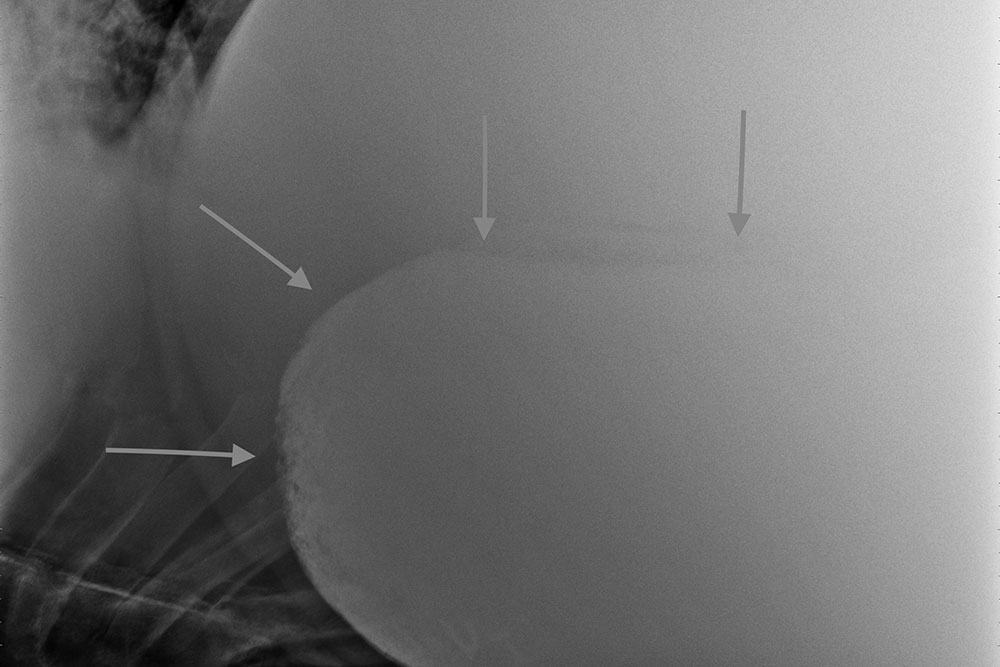Sand Colic in Horses: Diagnosis, Treatment, and Prevention

Diagnosing Sand Colic
If a horse exhibits signs of colic, and the owner or veterinarian believes sand might be a contributing factor, certain diagnostics can help confirm their suspicions. In addition to the routine colic diagnostic work-up, careful auscultation (listening with a stethoscope) of the ventral (lower) abdomen might reveal oceanlike sounds indicating the presence of sand. Veterinarians can also measure fecal sedimentation by placing fecal balls in a rectal sleeve and adding water to see if sand accumulates in the fingers of the glove. However, these methods are not always accurate, and horses with significant sand accumulations might not have sand in their feces at the time of examination. An ultrasound exam can help identify the presence of sand, but it can be subjective and does not help the vet quantify how much sand is present.
Gastrointestinal tract radiographs allow veterinarians to definitively identify sand in the gut and quantify how much has accumulated. The downside is this diagnostic modality might only be available in a hospital setting and not in the field, particularly for larger horses. Abdominal radiography is the best diagnostic method for evaluating the amount of sand accumulation, and it can also serve as a tool for monitoring sand disappearance with treatment. Further, evaluating radiographs for excessive gas accumulation might increase the index of suspicion of a displacement or complete obstruction in painful horses and expedite going to surgery if colic signs persist despite medical treatment
This story requires a subscription to The Horse magazine.
Current magazine subscribers can click here to and continue reading.
Subscribe now and gain unlimited access to premium content.
Subscribe NowWe at The Horse work to provide you with the latest and most reliable news and information on equine health, care, management, and welfare through our magazine and TheHorse.com. Our explanatory journalism provides an understandable resource on important and sometimes complex health issues. Your subscription will help The Horse continue to offer this vital resource to horse owners of all breeds, disciplines, and experience levels.
Written by:
Isabelle Kilcoyne, DVM, Dipl. ACVS
Related Articles
Stay on top of the most recent Horse Health news with















